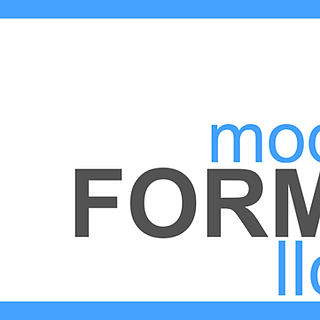#004 Modern Roof
- Duff Bangs
- Feb 9, 2018
- 3 min read
After thinking about the term "modern" and how it relates to architecture, I thought it fun to start a little blog series on modern design elements. In this series I would like to take a look at the elements or the kit of parts an architect typically uses when designing a modern home or building. This kit of parts can include various roof forms, wall design as it applies to textures and trim, windows, doors, spatial layout, cabinets, etc.
But, before we get into today's post on roof forms, I should quickly address what "modern" currently means in the context of architecture. Every architect is going to have a different idea of what modern is. The saying goes, "if you ask one hundred architects what modern is, you are going to get one hundred different opinions." So, this is merely what my take or my definition is of modern. I will most likely dive deeper into what modern means for me and modFORM in a later blog post.
So to simplify, no pun intended, modernism is about well, simplifying. It is reducing the design and architecture down to its simplist form, nothing more and nothing less. This translate into minimalist materials (no decoration) as well as simplifying the arrangement and composition of space or the layout of a house or building. It’s about understanding how one lives within their space and their daily sequences and arranging that space in a rational and organized way. It is a balance between form and function or, for the most part, allowing function to drive form. Which, as you will see throughout these blog posts, how each of these modern elements are shaped by the functions they contain.
For today's post, I would like to share about modern roof forms. A roof is a very important part of a home or building as it is essentially the cap that keeps the weather out. The roof is also a very prominent part of a structure. In a lot of ways, it used to described the shape or style of the house it is covering.
Below is a basic list of basic roof forms used in a modern way. One, thing to keep in mind is there is no one roof that will be appropriate in all situations. Typically, as an architect, it is best to understand the client's needs and desires of their design program along with understanding the climate in the region (is there a lot of snow?) and let the roof shape around these needs. In other words, allow form to follow function. So without further ado, here are a few roof forms:
SINGLE PITCH or SHED ROOF
The single pitch is traditionally the most widely used for modern design. The shed roof is a great roof for opening up a room to a grand view as well as allowing natural light to enter into a space. Click here for an example of a shed roof.

The shed roof also allows for greater use of space in a stacked function. In other words, you gain more usable floor space in an upper floor or loft as compared to a gable roof.

FLAT ROOF
The flat roof is the other typically used roof in modern design. Typically not as widely used (however not impossible) in very rainy or snowy climates. The flat roof is more appropriate in dry and sunny dessert regions. Two great examples shown below are the parapet roof and the flat roof with long overhangs. Click here for a parapet example and here for a flat roof example.

GABLE ROOF
The gable roof is an interesting roof. The gable roof is possibly the most commonly recognized roof and is traditionally not as common in modern applications. However, there are two ways that modern architects use the gable roof in a more modern way. The steep gable with no overhangs seen here and the long, low pitch seen here.

That is just a small list of typical roof forms used in a modern way. There are many more roof shapes, styles and forms that architects use in modern applications. Please leave a comment below if you would like to share your thoughts on any of your favorite roof styles, shapes or forms. Stay tuned for more posts on various modern design elements!
Thanks for reading!





Comments